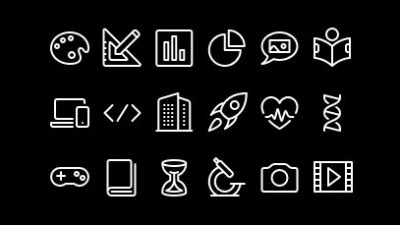Assessments

NSLARC
Assessments
- RIT/
- NSLARC
Sign Language Proficiency Interview: American Sign Language (SLPI:ASL)
The SLPI:ASL is a conversational approach to sign language communication skills assessment. The goal of the SLPI:ASL is to assess how well people are able to use sign language for their communication needs, and to assist people with development of their sign language communication skills.
More information about the SLPI:ASL, including description, registration, and preparation tips
The Classroom Sign Language Assessment (CSLA)
The CSLA provides an analysis of a faculty member’s ASL use in the classroom and includes suggestions for improvement. An instructor’s sign language skills in presenting information and interacting with students is rated by independent evaluators on the basis of six linguistic features. The resulting analysis can be used as supporting documentation in annual appraisals and for tenure or promotion, as well as to guide future opportunities for improvement.
To schedule a session, please contact us.
Group Communication Observation Tool (GCOT)
The GCOT is a tool for obtaining feedback regarding communication in group situations (meetings, workshops, classrooms, etc.). It is an optional tool for individual use and is not a formal test, measure, or rating of communication.
The GCOT Form is a guide for recording feedback during an observation. This form is divided into eight communication categories with examples listed to help define each category. Examples are not exhaustive, but are representative of the type of behaviors that may be observed for each category.
The listed behaviors are intended as a guide and, therefore, are not presented as a checklist. A one-page summary of GCOT categories is also available.
By using the GCOT, our faculty receive feedback on communication in group situations, including areas of strength and areas that may need improvement.
GCOT feedback may be obtained through a self-initiated process or as part of an arranged observation by a chairperson. Faculty may use information gathered through the GCOT in developing communication plans and in writing annual self-appraisals.
To schedule a session, please contact us.
- Choose a group communication setting for the observation (a meeting, class, workshop, etc.).
- Select a person to be your observer. This observer could be a peer or a chairperson.
- With your observer, decide how the observation will be conducted, including where and when it will be and whether it will be a one-time or repeated occurrence.
- You might want to schedule more than one observation to track changes in your communication effectiveness.
- Since there are eight GCOT communication categories, you may want to set up multiple observations and focus on a few categories per observation.
- With your observer, discuss the process for observation and feedback, including respect for confidentiality.
- Meet with your observer after the observation(s) to discuss written comments and other feedback gathered with the GCOT form.
- For help in addressing areas identified for improvement, you may use the following resources:
- Faculty Staff Sign Language Education Program (FSSLEP)
- GCOT Form (DOC)
ASL Fingerspelling and Numbers Comprehension Test (ASL-FaN-CT)*
The ASL-FaN-CT measures signers’ ability to comprehend fingerspelling and number signs both in isolation and in constrained context. ASL-FaN-CT consists of five independent test versions, of 30 self-response items, each balanced for item difficulty. Fingerspelling and number comprehension have been shown to be difficult for signers learning ASL as a second language to acquire due to its sequential segmental nature. FaN-CT gives users the opportunity to isolate fingerspelling as one important part of ASL comprehension and to see fingerspelling used in isolation and in conjunction with other signed phrases. Psychometric analyses reveal that the test is very sensitive to differences among those with intermediate and advanced skills.
*Website under development; check back regularly.
ASL Online Vocabulary Exam (ASL-OVE)*
The ASL-OVE is a multiple-choice picture/word-sign matching test that measures knowledge of ASL vocabulary. ASL-OVE was developed to measure the breadth and depth of vocabulary in ASL second language learners. The test focuses on holistic vocabulary knowledge across a wide range of semantic domains. ASL-OVE is a computer adaptive test that estimates users’ abilities based on user responses to previous test questions. While ASL-OVE focuses on single signs in isolation, vocabulary knowledge has been shown to be a good proxy for language proficiency in second language learners. ASL-OVE is intended for new and developing signers who are still acquiring basic vocabulary skills. Psychometric analyses are currently underway.
*Website under development; check back regularly.




